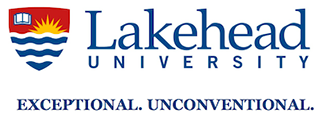I have been using the same method as Molly for the last 10 years. It has worked well for me.Neil--I only use a final peer evaluation to weight the overall team average for the contribution to each individual’s final grade. I use a midsemester peer evaluation for students to get an idea of how it works and how it might influence their grade, but only the overall final evaluation counts.
I use the method where each student has points equal to ten times the number of teammates they have, and they have to allocate all of the points in evaluations but cannot give everyone a ten. In a team of six, for example, everyone has 50 points to allocate among their 5 teammates. At least one person will get above 10, at least one below, and some may get a 10. The average is used to weight the team score for each individual with a max of 100% provided for that portion of the individual’s grade. I also request comments to support the evaluations given.
Molly Espey, Professor
John E. Walker Department of Economics
312H Wilbur O. and Ann Powers Hall
Clemson University
Clemson, SC 29634
From: Team-Based Learning <[log in to unmask]> On Behalf Of Carter, Neal
Sent: Friday, April 7, 2023 12:16 PM
To: [log in to unmask]
Subject: Re: Peer evaluation guidance
Hi John, I have a few of questions for your consideration. Could you simply use the iRAT scores as the adjustment for quizzes? If they are scoring high or low on the iRAT, would that be enough to provide the accountability you seek? My understanding
ZjQcmQRYFpfptBannerStart
This Message Is From an External Sender
Use caution when opening links or attachments if you do not recognize the sender.
ZjQcmQRYFpfptBannerEnd
Hi John,
I have a few of questions for your consideration.
- Could you simply use the iRAT scores as the adjustment for quizzes? If they are scoring high or low on the iRAT, would that be enough to provide the accountability you seek? My understanding was that peer evaluation scores would be used to adjust complex applications or be treated as a separate grading category.
- Could you set upper and lower bands on how they can rate anyone who showed up for the RAT? (For those absent, I let my students choose what % of the team score to give the missing member without affecting the team score. I encourage them to set their own rules on how this will be handled, such as requiring notification if they won’t be there or number of times they get a pass.)
- Could you establish a rule that no one will receive more than 100% or 105% of what the tRAT was worth?
Hope this helps!
Neal Carter
Professor of Political Science
Brigham Young University—Idaho
From: Team-Based Learning <[log in to unmask]> On Behalf Of John Gotwals
Sent: Thursday, April 06, 2023 1:59 PM
To: [log in to unmask]
Subject: Peer evaluation guidance
Hi all,
I’m looking for some peer evaluation guidance.
I use peer evaluations to adjust students’ averages across the team quizzes. I use the Fink Method to conduct this adjustment. This is where the ratio of the student’s average peer evaluation score and the team’s average peer evaluation score is multiplied against their average across the team quizzes.
This works great, except in cases where there is one team member that gets a peer evaluation score that’s much, much lower than their teammates. This pulls down the team average and results in the person with the low evaluation taking a big hit on their team quiz score while the other team members get a big boost (sometimes adjusting their team quiz scores well above 100%).
To deal with this I’ve thought of treating the team member with the really low evaluation as an outlier, removing their score from the adjustment calculations, and just applying a set deduction to their team quiz average. The challenges with this approach are:
- What criteria do I use to identify outliers? How much lower do their peer evaluation scores have to be from those of their teammates?
- How much of a set deduction should I apply?
Has anyone else dealt with this issue? Any suggestions or thoughts? I’m all ears!
Thanks,
John
--
*********************************
John K. Gotwals, Ph.D. (he/him)Associate Professor & Graduate Coordinator
School of Kinesiology
Lakehead University
955 Oliver Rd.
Thunder Bay, Ontario P7B 5E1
Canada
phone: 807 343-8010 ext 7952
Lakehead University resides on the traditional territory of the Fort William First Nation and the Ojibwe, Odawa, and Pottawatomi nations, collectively known as the Three Fires Confederacy. I am grateful for the opportunity to base my work out of that territory.
Are you ok? Our How to ask for Help at Lakehead guide was made for you.
Need to talk to someone right now? Good 2 Talk is a free, confidential 24/7 post-secondary student helpline. Call 1-866-925-5454 or text GOOD2TALKON to 686868.
To unsubscribe from the TEAMLEARNING-L list, please click here.
Further information about the UBC Mailing Lists service can be found on the UBC IT website.
To unsubscribe from the TEAMLEARNING-L list, please click here.
Further information about the UBC Mailing Lists service can be found on the UBC IT website.
To unsubscribe from the TEAMLEARNING-L list, please click here.
Further information about the UBC Mailing Lists service can be found on the UBC IT website.
Neil Haave, PhD
Professor (Biology), Augustana Faculty
University of Alberta, Canada
DISCLAIMER: Any and all spelling mistakes contained in this email were inserted at the whim of my iPhone.
To unsubscribe from the TEAMLEARNING-L list, please click here.
Further information about the UBC Mailing Lists service can be found on the UBC IT website.

